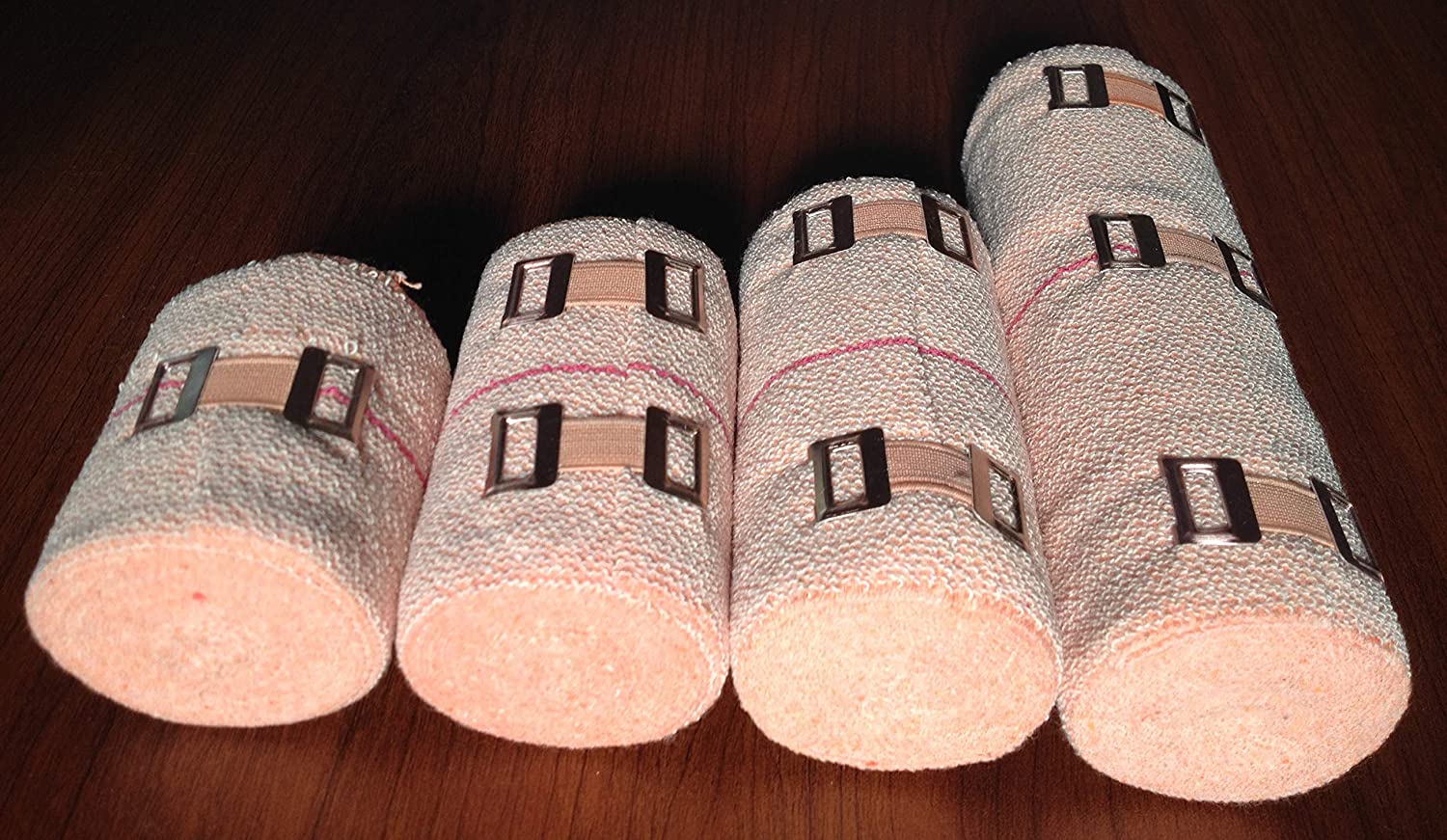Why do Orthopedic Surgeons don’t tell about the brilliant usages of crepe bandages?
Crepe bandages are suitable for use as support for sprains and strains in joints and muscles. It also works as a moderate compression bandage for knee swelling, ankle swelling, and other relevant injuries.
Is crepe bandage good for pain?
A crepe bandage provides pressure to a limb or joint. It is used to reduce swelling. Relieve pain and provide support for weak body parts.
How long should I wear the crepe bandage?
How long should one wear a crepe bandage? Experts also recommend that you use your compression bandage only for the first 24 to 48 hours after sustaining an injury, as it helps prevent swelling and remove the bandage at least twice daily for a few minutes before placing it back again.
Can we use a crepe bandage at night?
The breathability and stretchiness of the cotton allow for long-lasting comfort throughout the day. However, experts recommend against crepe bandage use at night to ensure that the compression bandage doesn’t affect blood circulation overnight. So, always remove a patient’s compression bandage before sleep.
How does a crepe bandage reduce swelling?
Compression bandages are used to apply pressure to a specific area or injury. They help minimize swelling by keeping fluids from gathering at the injury site.
Should I wear a bandage overnight?
Keep your wound covered with clean gauze or an adhesive bandage during waking hours. You can leave it uncovered while you sleep if it isn’t oozing or painful. Don’t soak your wound for long periods when bathing.
Should crepe bandages be tight or loose?
The bandage should be snug, but it should not cut off circulation. Check your toes (if the bandage is wrapped around your foot or ankle) or fingers (if it’s around your wrist). If they become purplish or blue, cool to the touch, or numb or tingly, the wrap is too tight and should be loosened.
What is the difference between a crepe bandage and a normal bandage?
A light elasticized bandage is used to hold a dressing in place, whereas a crepe or elasticized crepe bandage is used for applying support or firm pressure to a soft tissue injury.
Is crepe bandage used for back slabs?
Abstract. Cotton crêpe and stretch bandages are commonly used in back slabs and cast in orthopedic practice. In theory, they allow swelling to occur after injury while splinting the fracture.
Does crepe bandage help in healing?
Crepe bandages are ideal to support the healing of sprains and strains, as they provide good compression to injured areas, as per the PRICE method, but as they’re elastic they don’t prevent joints or muscles from flexing. Cotton also allows the skin to breathe, and these bandages are washable and reusable.
Can I leave a bandage on for 24 hours?
For the first 24 hours keep the bandage intact and dry. Try not to remove it as it helps to minimize bleeding which can occur this first day.
What happens if you leave a bandage on for too long?
Leaving bandages on too long can slow the healing process and encourage infection. Replace any dressing when fluids soak through. This is called bleed-through and ideally, bandages should be changed before this occurs. Bleed-through increases the danger that a bandage will adhere to the wound.
Does compression help healing?
Compression wraps limit the veins’ ability to expand and help blood move more efficiently, which assists the healing process. Further, reducing the inflammation near your wound makes it easier for your damaged skin to receive oxygen, which also speeds healing.
Is it okay to wash the crepe bandage?
Crepe bandage washing instructions are simple. Just wash the bandages by hand in warm water with soap or laundry detergent and rinse well. Hang the bandages to air dry or dry them on a radiator.
Is crepe bandage good for ankle pain?
Compression: Doctors recommend compressing the sprained ankle by using an elastic or crepe bandage. This helps in reducing swelling and alleviates pain. It is also helpful in maintaining joint stability. While the bandage should be wrapped around firmly, you should not bind it too tight.



